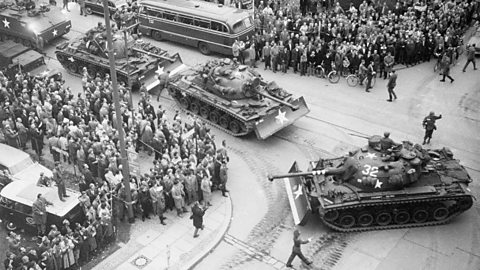ranchosantafenow.net – The Cold War, a period of geopolitical tension between the Soviet Union and the United States, along with their respective allies, shaped the world from the end of World War II in 1945 until the dissolution of the Soviet Union in 1991. This era, marked by espionage, propaganda, military buildup, and proxy wars, was a defining moment in 20th-century history. It was a conflict that never escalated into full-scale fighting between the two superpowers but had a profound impact on global politics, economics, and culture.
Origins of the Cold War
The roots of the Cold War can be traced back to the end of World War II, when the Allied powers—led by the United States, the Soviet Union, Britain, and France—emerged victorious over the Axis powers. As the war drew to a close, the alliance that had been forged in the fight against Nazi Germany and Imperial Japan began to fray. The Soviet Union, under the leadership of Joseph Stalin, sought to expand its influence and establish communist governments in Eastern Europe. The United States, led by President Harry S. Truman, was determined to contain the spread of communism and promote democracy and free-market capitalism.
The Iron Curtain Descends
The division between East and West became increasingly pronounced with the descent of the “Iron Curtain,” a term coined by Winston Churchill in 1946 to describe the physical and ideological barrier that separated the Soviet-controlled Eastern Europe from the Western democracies. The establishment of communist governments in countries like Poland, Hungary, and East Germany, coupled with the Soviet Union’s refusal to withdraw its troops, deepened the mistrust between the East and the West.
The Arms Race and Nuclear Standoff
One of the most dangerous aspects of the Cold War was the nuclear arms race. Both superpowers sought to outdo each other in nuclear capabilities, leading to a standoff that brought the world to the brink of nuclear war. The Cuban Missile Crisis in 1962, when the Soviet Union attempted to place nuclear missiles in Cuba, is perhaps the closest the Cold War came to escalating into a full-scale nuclear conflict.
Proxy Wars and Global Impact
The Cold War was not confined to Europe. It played out in proxy wars across the globe, as both superpowers sought to influence the outcome of conflicts in Korea, Vietnam, Afghanistan, and elsewhere. These wars were fought not for territorial gain but to spread or contain the spread of communism.
Detente and the Thawing of Tensions
By the 1970s, the costs of the Cold War—both in terms of the economic strain of the arms race and the human toll of proxy wars—led to a period of detente, or easing of tensions, between the United States and the Soviet Union. This period saw the signing of the Strategic Arms Limitation Talks (SALT) treaties and a temporary reduction in the nuclear arms race.
The Fall of the Berlin Wall and the End of the Cold War
The Cold War came to an end with the fall of the Berlin Wall in 1989, a symbol of the division between East and West. This event, along with the subsequent collapse of communist governments across Eastern Europe, led to the dissolution of the Soviet Union in 1991. The end of the Cold War marked a significant shift in global politics, with the United States emerging as the world’s sole superpower.
Legacy of the Cold War
The legacy of the Cold War is complex. While it led to significant advancements in technology and space exploration, it also resulted in widespread human suffering and environmental degradation. The Cold War era also saw the rise of non-state actors and the increasing importance of international organizations, setting the stage for the globalized world of the 21st century.
In conclusion, the Cold War was a period of profound tension and conflict that shaped the world in which we live today. Its legacy continues to influence international relations, reminding us of the dangers of ideological division and the importance of diplomacy and cooperation in resolving global challenges.
